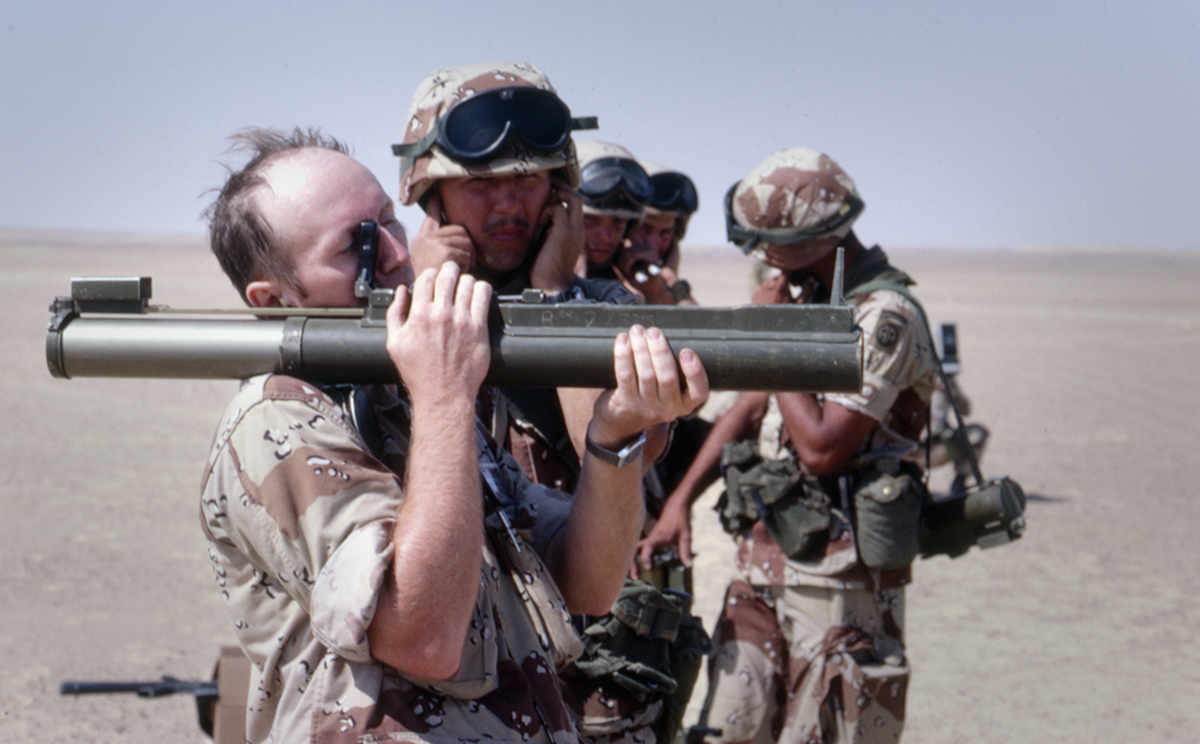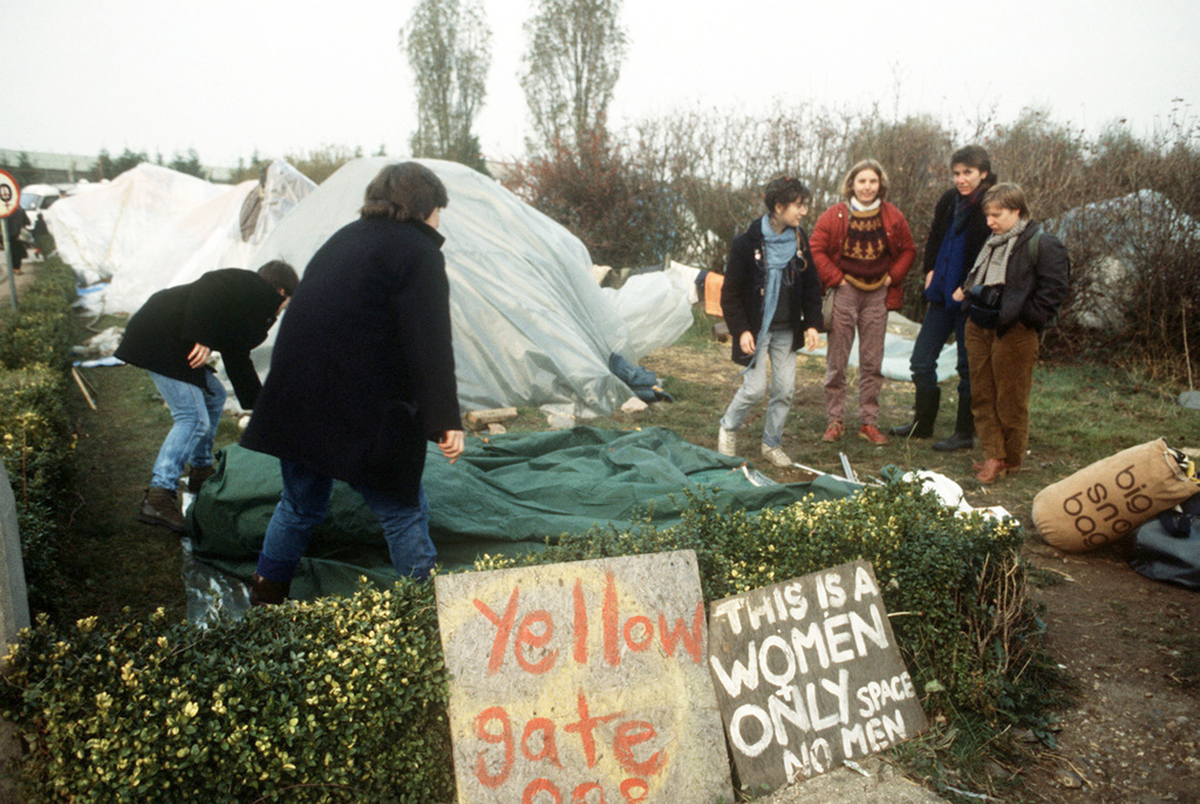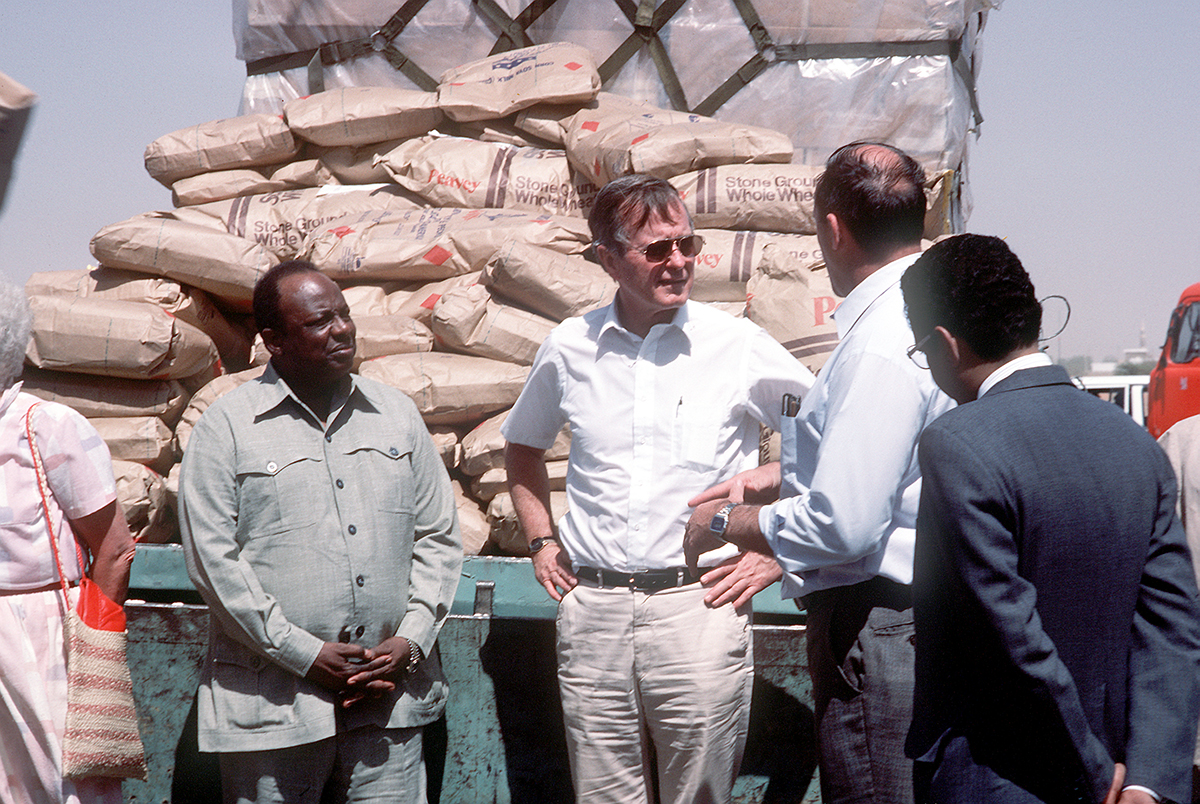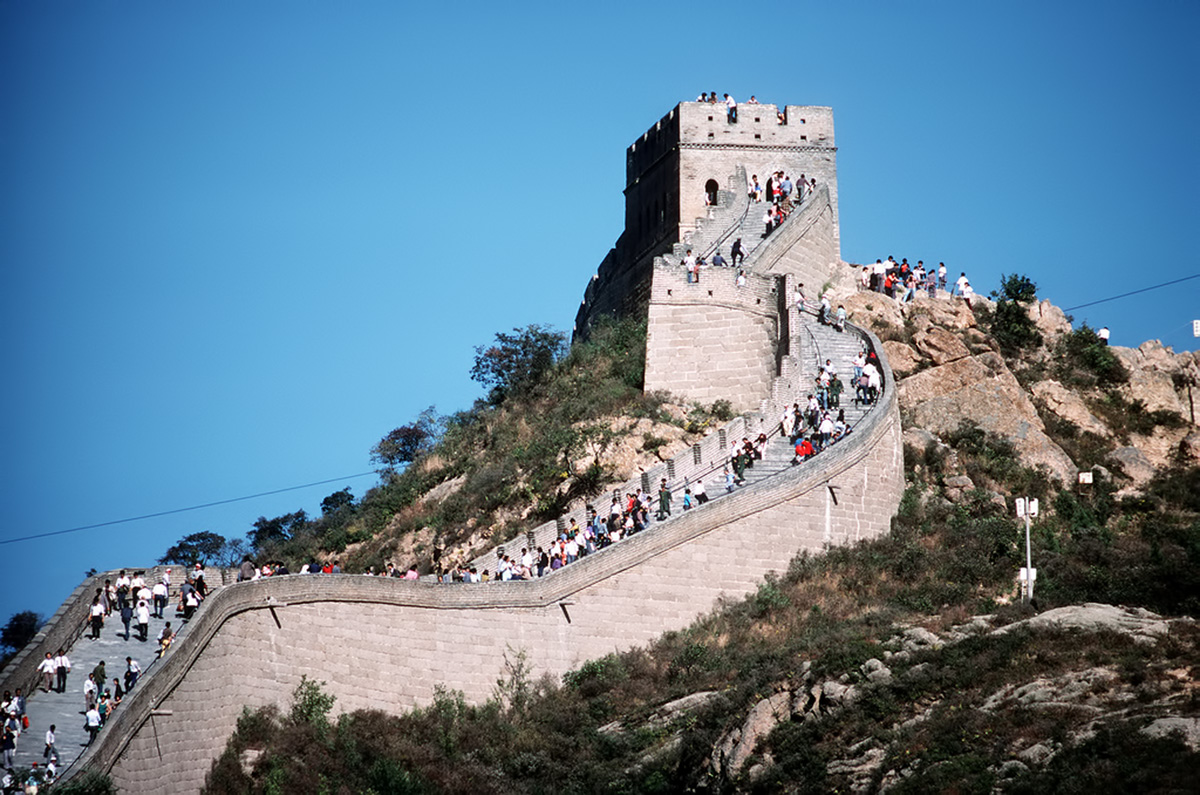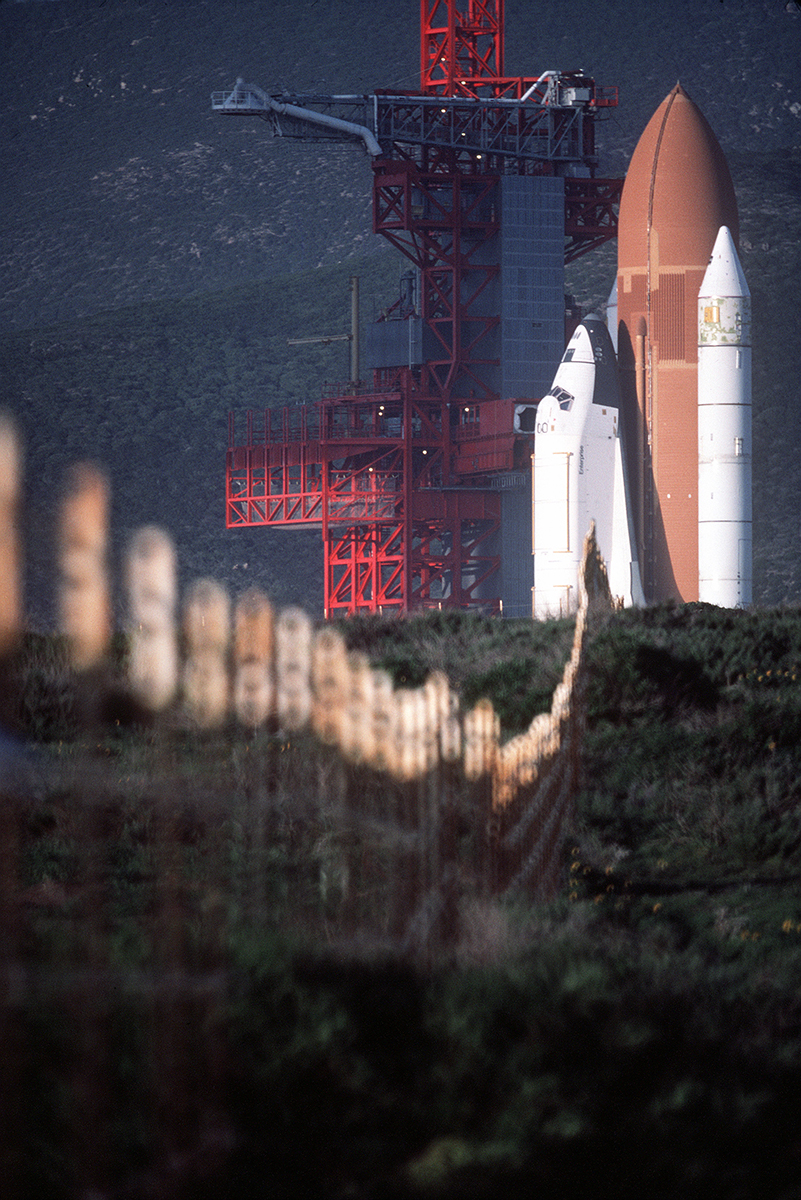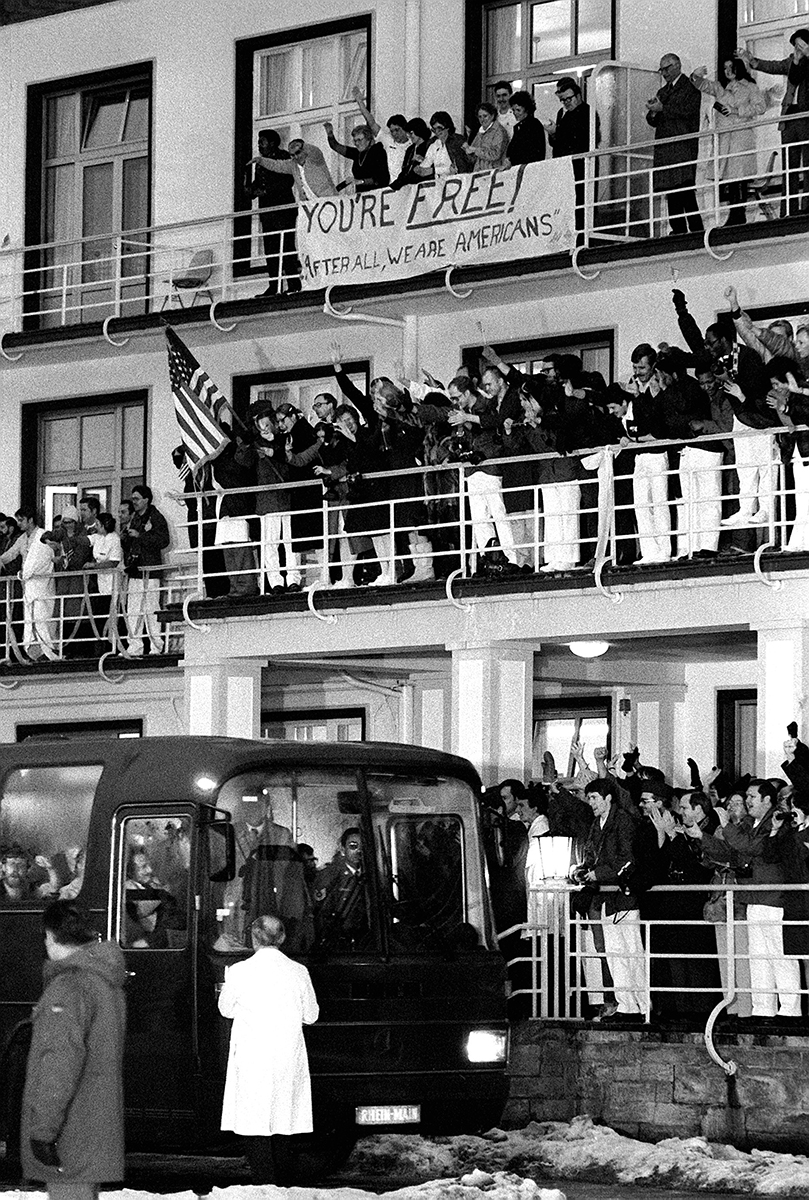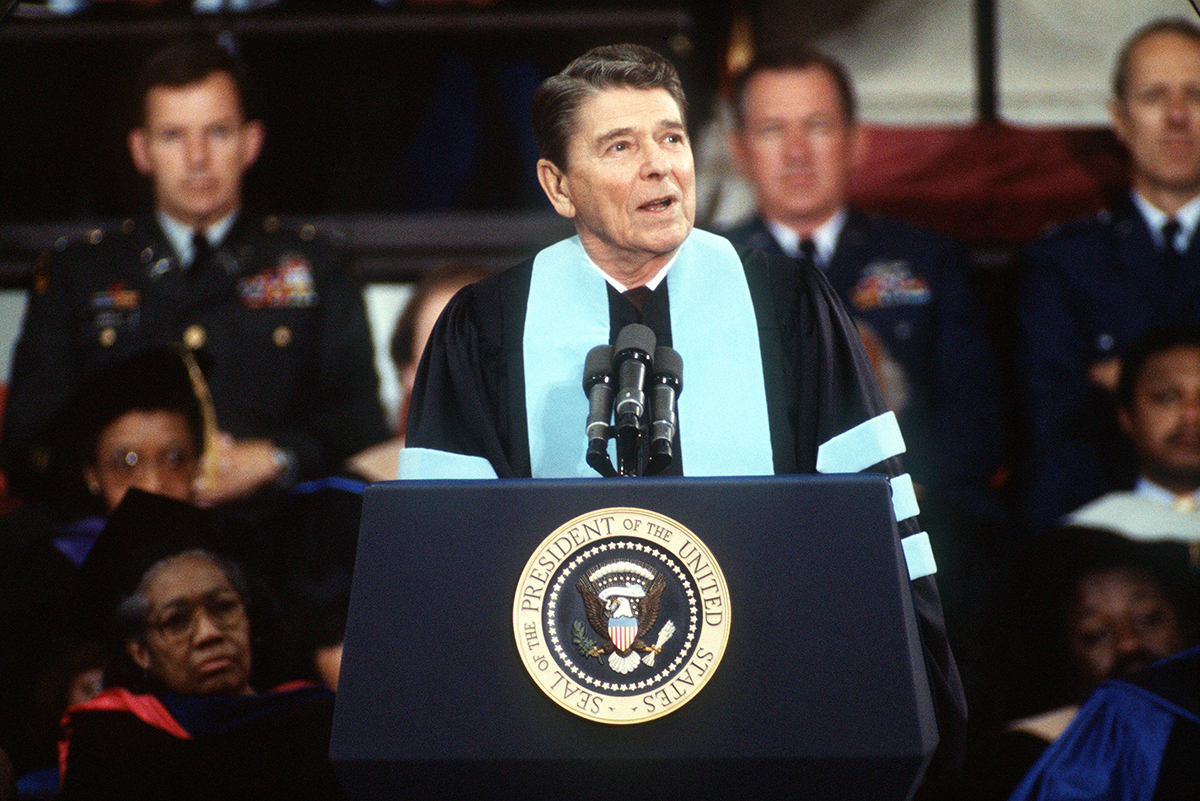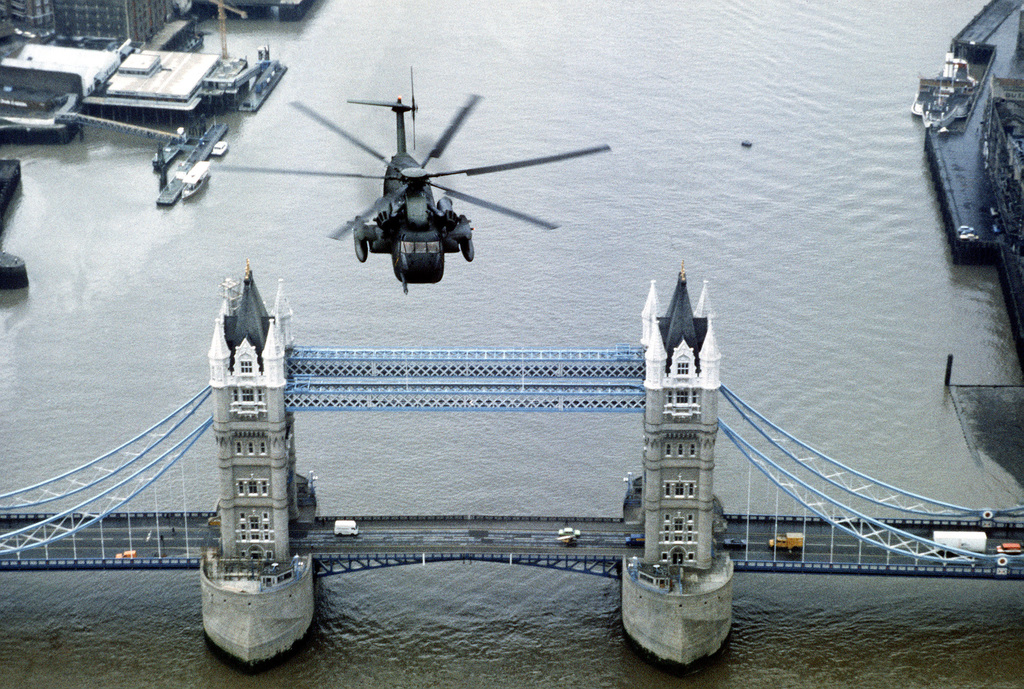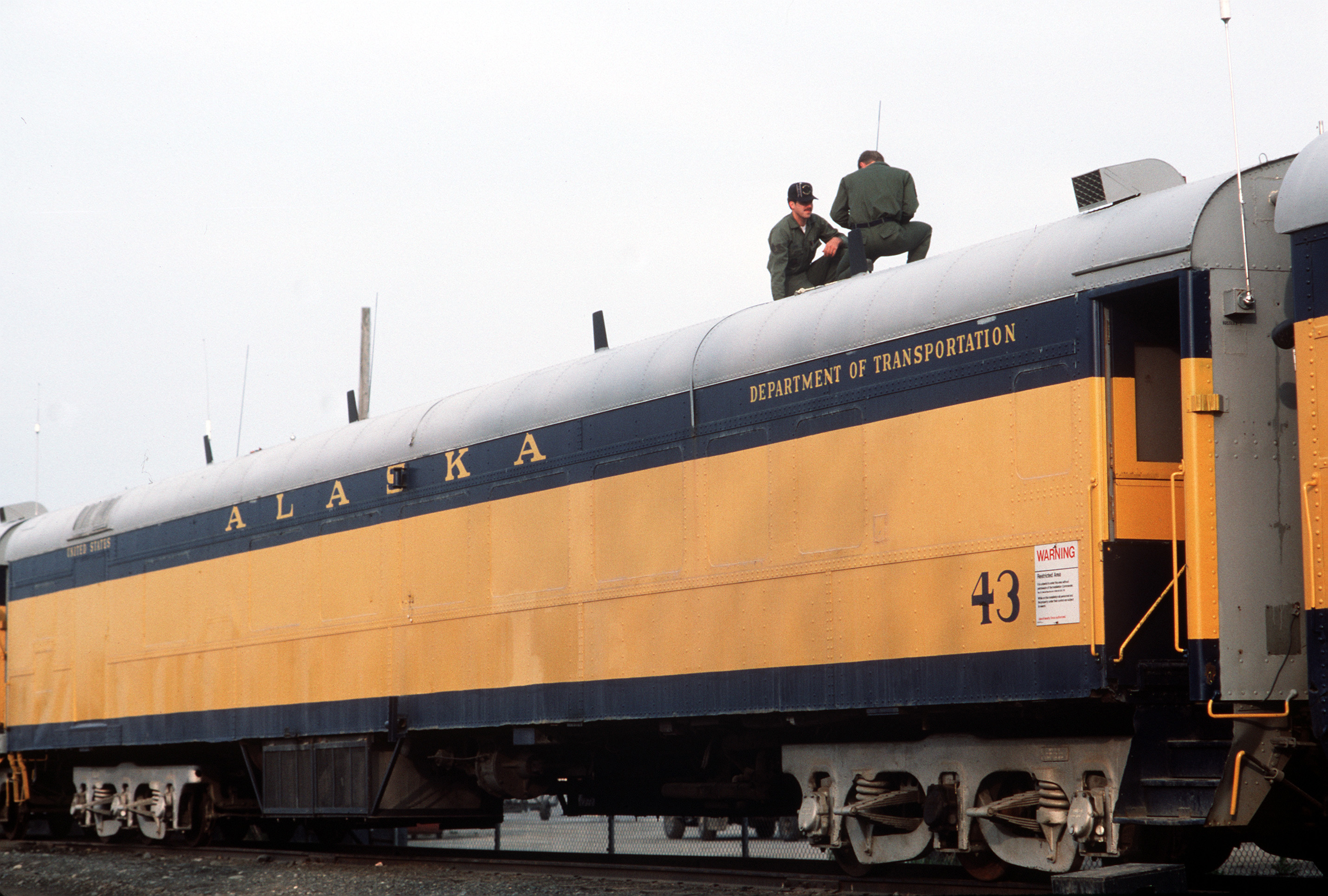Blast From The Past – I’ve covered a lot of military activities during my 24 year career as a photojournalist in the U.S. Air Force, as a member of Combat Camera. Photographing military exercises and operations was one of my main duties and required me to travel extensively, which I loved!! This shot was taken of me as I fired shoulder mounted LAWS rocket somewhere in the Sahara Desert during one of the Operation Bright Star exercises in Egypt.
Blast From The Past – October 15, 1983 – Anti-nuclear demonstrators…
Blast From The Past – October 15, 1983 – Anti-nuclear demonstrators camped outside the air base during the arrival of Ground Launch Cruise Missile equipment at RAF Greenham Common in the UK. USAF Photo by SSgt. James R. Pearson
last From The Past – March 6, 1985 – Vice-President George Bush…
Blast From The Past – March 6, 1985 – Vice-President George Bush, who was in the Sudan on a fact finding tour, receives a briefing on the U.S. Ethiopian relief operation from Dr. Philip Johnston, executive director of CARE. Over 50,000 pounds of food and supplies were delivered to the airport aboard a 6th Military Airlift Squadron aircraft. – USAF Photo by James R. Pearson
Blast From The Past – October 1, 1986 – A view of a portion of the Great Wall…
Blast From The Past – October 1, 1986 – A view of a portion of the Great Wall located northwest and north of Beijing, China showing the fortified tower positions and many tourists. The construction of the wall started in the 7th Century BC by the first Emperor Quin Shui Hunag Di. It is 25 feet high and nearly 25 feet thick in places, the original wall, 1500 miles in length, took ten years to complete. In 1368 AD the Ming Dynasty continued construction for 200 years and it now is over 3750 miles in length.
This photograph was made during an assignment where I covered the crew of a KC-10 Refueling Tanker that flew a group of Chinese Acrobats that had been performing in the U.S. back to their home in China. – USAF Photo by TSgt. James R. Pearson
Blast From The Past – February 1, 1985 – The Space Shuttle Enterprise…
Blast From The Past – February 1, 1985 – The Space Shuttle Enterprise in launch position on the Space Launch Complex (SLC) #6, commonly known as “SLICK 6”, during the ready-to-launch checks to verify launch procedures at Vandenburg AFB, California. – Photo by TSgt. James R. Pearson
According to the NASA Website: NASA ferried Enterprise to Vandenberg Air Force Base in California to conduct fit checks at the Space Launch Complex-6 (SLC-6), which NASA had planned to use for polar orbiting shuttle missions. NASA used Enterprise to conduct tests at SLC-6 similar to the 1979 tests at KSC’s Launch Complex 39. The tests at Vandenberg complete, NASA ferried Enterprise back to Dryden on May 24, 1985.
From Wikipedia: Space Shuttle Enterprise (Orbiter Vehicle Designation: OV-101) was the first orbiter of the Space Shuttle system. Rolled out on September 17, 1976, it was built for NASA as part of the Space Shuttle program to perform atmospheric test flights after being launched from a modified Boeing 747. It was constructed without engines or a functional heat shield, and was therefore not capable of spaceflight.
Originally, Enterprise had been intended to be refitted for orbital flight to become the second space-rated orbiter in service. However, during the construction of Space Shuttle Columbia, details of the final design changed, making it simpler and less costly to build Challenger around a body frame that had been built as a test article. Similarly, Enterprise was considered for refit to replace Challenger after the latter was destroyed, but Endeavour was built from structural spares instead]
Enterprise was restored and placed on display in 2003 at the Smithsonian’s new Steven F. Udvar-Hazy Center in Virginia. Following the retirement of the Space Shuttle fleet, Discovery replaced Enterprise at the Udvar-Hazy Center, and Enterprise was transferred to the Intrepid Sea, Air & Space Museum in New York City, where it has been on display since July 2012
Blast From The Past – Jan. 20, 1981 – The 52 former Iran hostages…
Blast From The Past – Jan. 20, 1981 – The 52 former Iran hostages are welcomed and cheered by hospital personnel as they arrive at the Wiesbaden Air Base hospital in Wiesbaden, Germany, after their release from Iran. The hostages stayed at the hospital for a few days before their departure to the United States. (USAF Photo by SSgt. James R. Pearson)
Blast from the Past – May 10, 1987 President Ronald Reagan…
Blast from the Past – May 10, 1987 President Ronald Reagan gives graduation address to the graduating class of Tuskegee University their friends and families during ceremonies held at the university. – USAF Photo by TSgt. James R. Pearson
Blast From The Past – A front view of an HH-53 Super Jolly helicopter…
Blast from the Past Series – December 10, 1982 – A front view of an HH-53 Super Jolly helicopter in flight over the Tower Bridge in London, England during a US Air Force pararescue training exercise. The helicopter was assigned to the 67th Aerospace Rescue and Recovery Squadron. – USAF Photo by SSgt. James R. Pearson
Blast From The Past – 1991, 1930th Information Systems Squadron, Elmendorf AFB, Alaska.
This gallery of photographs will highlight photographs that shot during my career as a photojournalist in the U.S. Air Force and working for The Messenger Newspaper in Madisonville, Ky. I hope you enjoy a look at my past from around the world! I plan to add a new photo daily till I run out of photos I want to post or a year has gone by.
Blast from the Past: 1991 – SSGT Bill Lovins, ground radio maintenance, left, and SSGT Randall Brinlee, teletype communications operator, install communications antennas on one of several converted railway cars which function as the Alaskan Air Command’s Alternate Command Post. Both men were assigned to the 1930th Information Systems Squadron, Elmendorf AFB, Alaska. – USAF Photo by TSgt. James R. Pearson

